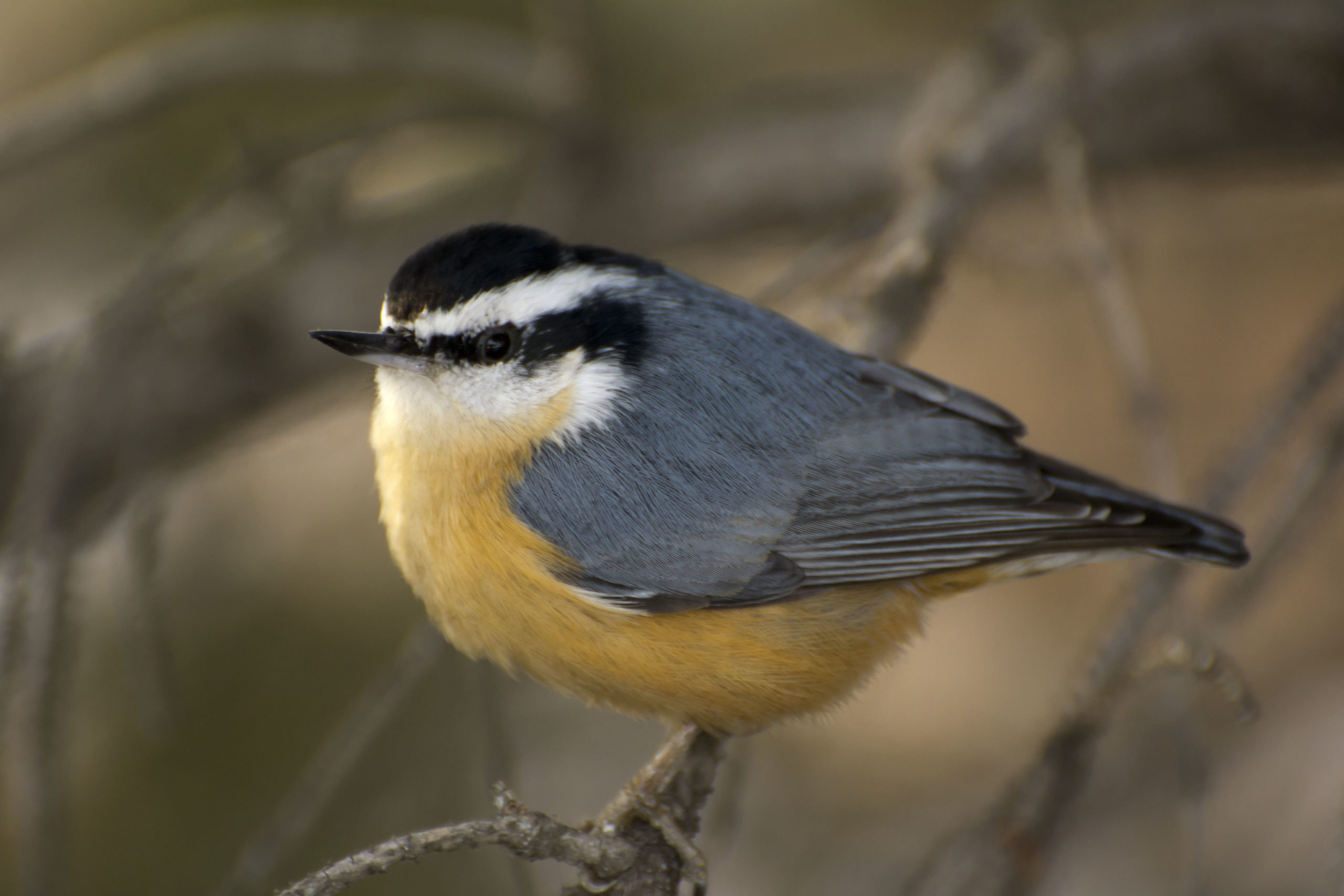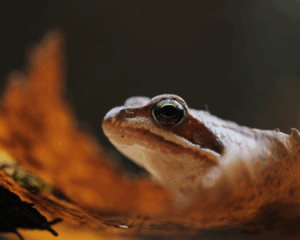Most birds migrate south during the winter when the weather gets too cold. However, there are some species that will remain in Calgary all year long. Two of these species that are commonly seen in Calgary are the black-capped chickadee and the red-breasted nuthatch.
How are these birds able to withstand the cold winters? Food gathering and roosting strategies help sustain these birds. In combination with proper winter roosts and a healthy supply of food caches, both of these birds are able to stay year round in Calgary.
Black-capped chickadees live in deciduous treed areas or mixed wood forests, where they create a roosting hole in rotten wood, which provides protection and insulation against sub-zero temperatures. Most of the time, the roosting holes are for one chickadee only.
They eat seeds, berries, plant material, and insects. They have a good memory which comes in handy as they store food in thousands of hiding places and rely on those stores throughout the winter!
Red-breasted nuthatches live in coniferous treed areas but often use aspen trees (when available) for their nesting cavities. The male will create several nesting cavities, often in dead trees, dead parts of a live tree, or trees with broken tops, and the female will choose the nest she prefers. Both birds will roost here throughout the winter season.
The diet of the red-breasted nuthatch is not as diverse as the black-capped chickadee in the winter, and relies mostly on conifer seeds. Similar to the chickadee, the nuthatch will also store food and come back to it throughout the winter season. In the non-winter seasons, the nuthatch will eat insects as well as conifer seeds.
Interesting facts:
- Both of these birds can be seen in parks throughout Calgary. A great place to view these birds is the Inglewood Bird Sanctuary.
- The red-breasted nuthatch and the black-capped chickadee have very different calls. The black-capped chickadee call is whistely and sounds like he is saying “hey, sweetie” and the red-breasted nuthatch has a more nasily call the sounds like she is saying “yank-yank”. If you’re interested, you can listen to the chickadee here (https://www.allaboutbirds.org/guide/Black-capped_Chickadee/sounds) and the nuthatch here (https://www.allaboutbirds.org/guide/Red-breasted_Nuthatch/sounds).
- The Boreal chickadee has a similar call to the black-capped chickadee, but sounds like he has a cold. Listen to his call here (https://www.allaboutbirds.org/guide/Boreal_Chickadee/sounds).
- Other birds that associate with chickadee flocks, such as the red-breasted nuthatch, respond to chickadee alarm calls.
- The physiology of the black-capped chickadee and the red-breast nuthatch feet differ, allowing these species to grasp onto trees differently. The chickadee has feet that have evolved for perching, and allows them to eat plant foliage easily. Whereas, the nuthatch has feet that have evolved for climbing, which allows them to walk on the side of a tree trunk while foraging bark for insects in the warmer seasons.
- Red-breasted nuthatches are fairly aggressive for their size, and will often compete with bigger birds for food.
- Both of these birds will feed off of bird feeders in yards all year round.
Sources:
Cornel University. 2015. Black-capped chickadee. Available on line: https://www.allaboutbirds.org/guide/Black-capped_Chickadee/lifehistory
Cornel University. 2015. Red-breasted nuthatch. Available on line: https://www.allaboutbirds.org/guide/Red-breasted_Nuthatch/lifehistory
Bird foot diagram: https://www.sciencebuddies.org/Files/3491/5/Zoo_img037.jpg
By Tayler Hamilton, AIWC Volunteer







15 thoughts on “Chickadee and Nuthatch Stay for the Winter”
I have noticed a marked decline in the number of chickadees and nuthatches at my feeders this winter. Where I used to have an abundance of chickadees, there are only a few at the feeders at a time. Usually there are more birds than room to perch. This is the second winter with no nuthatches. Feeders are clean with cover for the birds. Any thoughts on this? Has anyone else noticed this? Thank you for your time
Hi Karen, unfortunately we don’t have any information on if there is a decline, but perhaps reaching out to a local birding group in your area would be able to share more info on bird feeder counts etc.? Thank you!
is the picture at the top at Chickadee or Nuthatch?
The top picture is a nuthatch 🙂
I decided to give it a chance and watched the premier last night. Let me just say that Im addicted to the show after the 2 hour premier.
Thanks for taking the time to discuss this, I really feel strongly about it and appreciate finding out additional on this topic. If possible, as you acquire expertise, would you thoughts updating your blog with far more info? It is extremely useful for me.
Hi there, so happy to hear you enjoyed the blog! We are updating the blog twice monthly with articles on many different wildlife-related topics, but if there is something in particular you are wondering about, please feel free to get in touch with us at [email protected]!
I get read your own article. It’s extremely helpful. We will benefit a great deal from the item. Fluent
Thank you for your refreshing article. It was a pleasure reading it. Look forward to more articles from you!
I definitely knew about most of this, but having said that, I still found it helpful. Nice work!
Glad to hear you enjoyed the article!
Thanks for the great info! I would never have found this on my own!
When I open up your RSS feed it looks like a ton of weird text, is the malfunction on my end?
Hi there, looks like there was an error with a recent update, it should be back to normal now! Thanks so much for letting us know.
my God, i thought you were going to chip in with some decisive insght at the end there, not leave it with ‘we leave it to you to decide’.